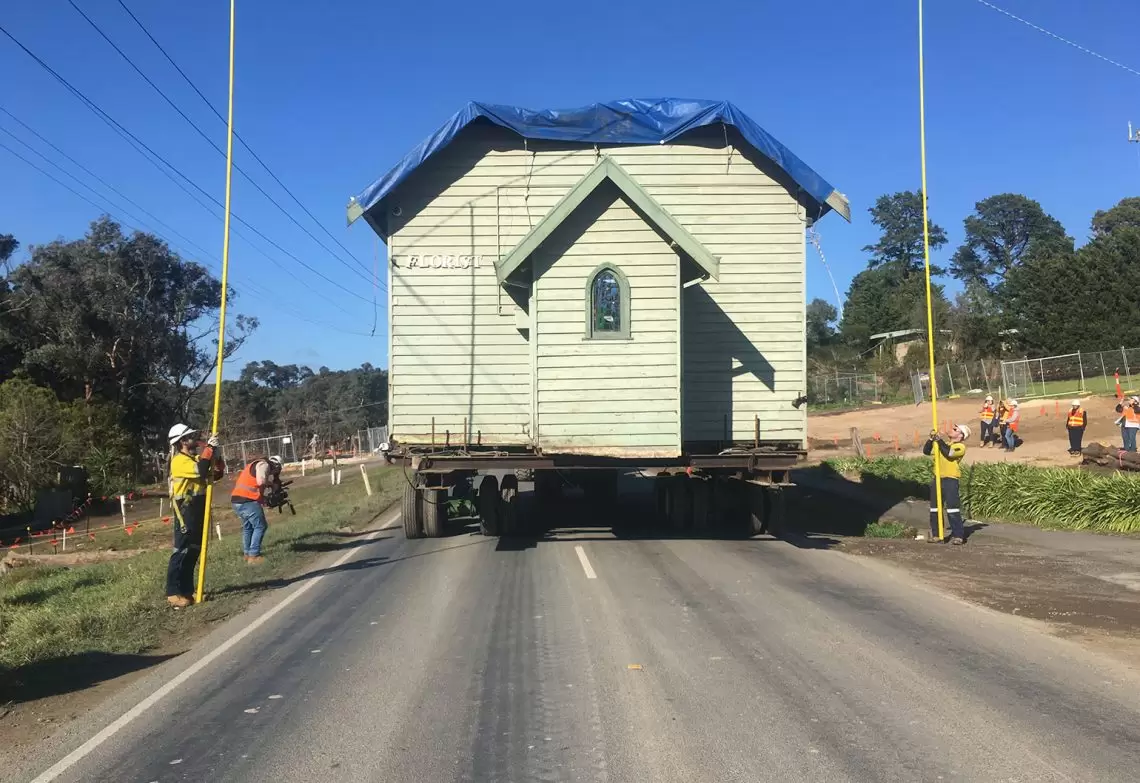Between 12 October and 14 November 1930, employees at the Indiana Bell Telephone Company in Indianapolis had a unique problem to contend with — the entrance to their building kept moving.
For four weeks, every hour the building was rotated 381 mm, until the eight-storey, 11,176.5-t building had moved 90 degrees from its original position. All while the company continued to operate from within.
The rotation of the Indiana Bell Building is an impressive example of structure relocation, or the practice of moving entire buildings.
A moving history
Engineers have been attempting structure relocation since the early 1800s. Back then, teams of horses or oxen were used to pull buildings to their new home. However, without the stabilising ability of modern technology, the buildings would rarely arrive unscathed, often missing a chimney.
The invention of the screw jack really helped get buildings off the ground, as it allowed a building to be lifted uniformly, which reduced the likelihood of damage. Screw jacks also presented new opportunities for engineers, as buildings on poor soil or low lying lands could be raised to install new foundations. The raising of central Chicago in the 1850s and 60s owes much to screw jacks.
Meanwhile, the steam train helped get things moving, as buildings could travel further and faster than ever. Like the screw jack, it also presented new opportunities for large structures — rotation.
When the heads of the Indiana Bell Telephone Company wanted to build more offices next to their building, they realised that rotating the current structure and shifting it 16 metres west would give them enough room to construct a second building next to it. Most of the heaving lifting was done by hand-operated jacks, while cables attached to a stationary steam engine assisted with pivoting the building.
Matthew Manifold, Managing Director of South Australian-based structural relocators Mammoth Movers, told create that hydraulic lifts and dollies now do most of the heavy lifting, literally.
“We have specialised equipment that can dig right under the building, propping the structure as we go. Once we’re there we build a steel lattice that we then pre-stress, so once we begin jacking it up it doesn’t disrupt the building, raising it in a unified manner,” he said.
“We also have hydraulic dollies that carry the building. These dollies are connected in zones ensuring that the hydraulics adjust, if a wheel goes into a hole or depression so that there is no stress transferred to the building.”
There’s also the opportunity to create an above ground with the support system if going under isn’t possible.
“We can hang the building. We put steel beams through the windows and doors and actually lift the building up that way. This process is called banding – where the building is hung on high tensile steel strapping from the support system,” Manifold added.
The technology is still advancing, and Manifold said we now have self propelled dollies which enable structures to be moved independent of a pull vehicle, loader or equivalent. There are also remote steering systems which enable the building to be steered from afar.
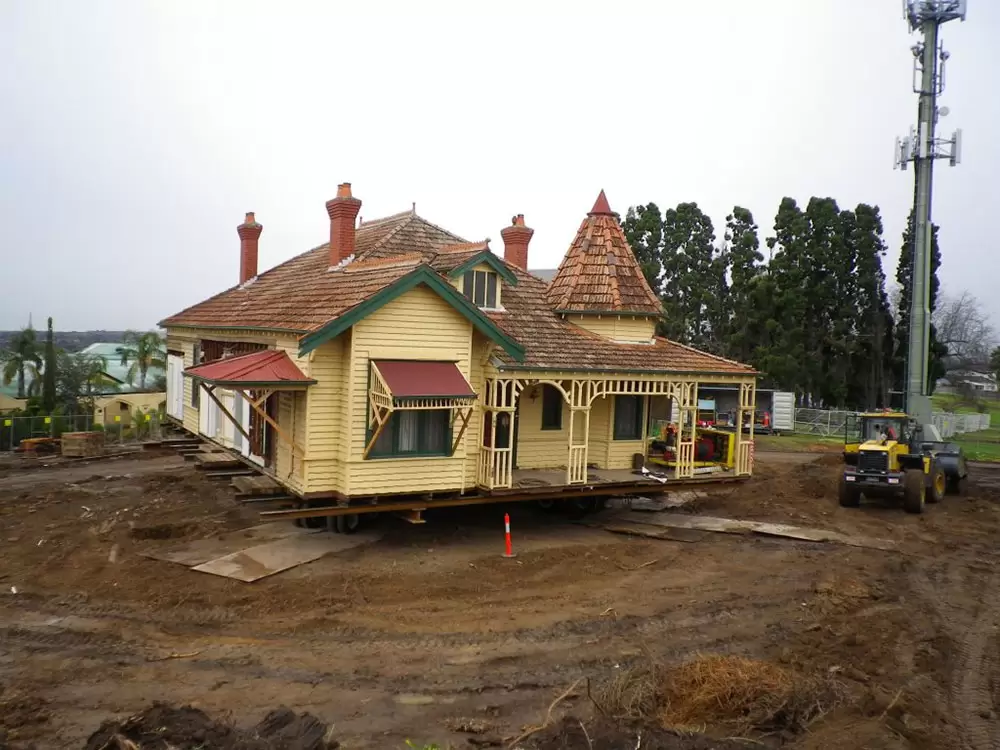
Safe as houses
Structure relocation is a complex process that involves the input of multiple engineering disciplines.
“To start with, you need to analyse the building and determine its load distribution and weight, and design of the support system, so there’s that structural element,” Manifold said.
“Then with the actual move there needs to be an understanding of hydraulics and all the lifting equipment, which falls into the mechanical category. And of course at the end there is repositioning the building and the new foundations, which can fall into the structural or civil area.”
While we don’t tend to move structures with people in them (that would be a serious WHS infraction, Manifold said) movers do leave the furniture in a building as they relocate it.
“There is the perception that it’s a risky business but it really is not as scary as it looks,” Manifold said. “Once the building is supported on the hydraulic system it is not subject to changes in stress. As a result, the building will behave as though it is still on its foundation”
According to Manifold, some relocation companies in the US have taken to demonstrating the safety of these moves by leaving open soft drink bottles on the top of the structure’s chimney.
“We can move a building with all the furniture inside, pictures hanging on the walls and glassware in cabinets. Whilst I certainly wouldn’t recommend it, in terms of meeting WHS principles of minimising risk to as low as reasonably possible, there’s no technical reason you couldn’t move a building with people in it,” he said.
“If the furniture was to be damaged in a move there would be a bigger issue with the building you need to deal with.”
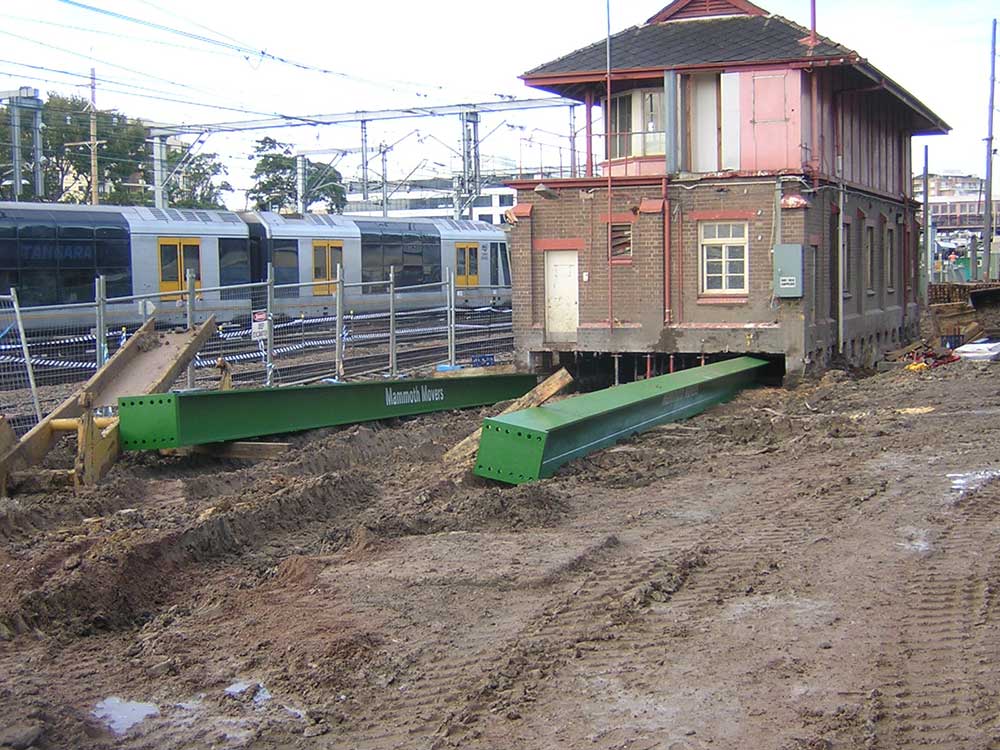
A challenging move
In 2007, the NSW Transport Construction Authority (TCA), then the Transport Infrastructure Development Corporation, engaged Manifold and his team to move the signal box at Hornsby Railway Station in Sydney’s Upper North Shore. The TCA wanted to build another rail line which went straight through where the signal box sat.
The Hornsby Signal Box is listed on Transport for NSW’s Heritage and Conservation Register, so demolishing it was out of the question. Deconstructing and rebuilding the box in another location was considered, but the fragile nature of the equipment housed in the box meant it would have been an expensive exercise.
Instead, the decision was made to move the 320-t building. And thus began what Manifold calls one of the most challenging moves in the world.
“We had experts come over from America, these are people who have been doing this for 40 or 50 years and even they said this was the most complicated job they’d ever been part of,” he said.
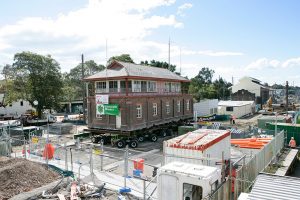
To begin with, the signal box was right next to the rail line, which remained active during the move. On the other side of the box ran numerous fibre optic and control cables, which, if damaged, could send Sydney’s rail system into chaos. Because of these obstacles the movers had to come at the building from its narrow ends.
These were just the problems outside the box. Inside, Manifold and his team had to contend with decades-old equipment that was creating point loading into footings that weren’t tied to anything.
“We actually had to build a temporary truss out of chains to hold up the equipment whilst we knocked out its footing,” Manifold said.
While taking out the footing, the team found railway track used as reinforcement in the building’s footings. The hardened steel made it difficult to remove the footings and, as a result, the team had to alter the support and jacking methodology to avoid having to remove the majority of these footings. This narrowed the workspace but avoided a blow out of the project program.
To cap things off, it poured with rain in the days before the move, leaving the team worried they’d be undertaking the mammoth challenge in wet and muddy conditions. Steel plates were brought in to spread the load of the building as it moved to the new site and to avoid route issues.
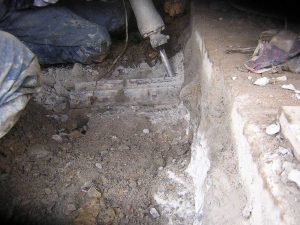
Fortunately, they were met with clear skies on the day of the move and Manifold couldn’t have been more relieved to finally get the signal box up and moving, thereby avoiding delay to the overall rail project.
However, his problems weren’t over yet.
“At the new site itself there was a transformer and an aerial we had to get around, meaning we couldn’t come at the new footing straight on,” Manifold said “We had to actually move the building diagonally across the foundation. And pivot it into position over the new foundation slab.”
Thankfully, modern dollies make this much easier, and there was no need to engage the services of a steam train to pivot this building.
In the end, Manifold said he felt very proud of what he and his team had accomplished.
“There were a lot of non-believers,” he said. “This was the first building that was moved on dollies in Australia, and so a lot of people were thinking ‘oh it can’t be done’. I think that comes down to a lack of understanding of the process. It felt good to prove people wrong.”
More than a decade after the Hornsby Signal Box move, Manifold said he’s disappointed structure relocation isn’t used more often.
“There are definitely more options, for governments in particular, to use this industry more. If you’re going to widen a road, there is no need to demolish everything around it. We have the ability to move them back, to make space,” he said.
“It’s a really established industry in countries like the US and I think there’s definitely more opportunities to take advantage of it in Australia.”

